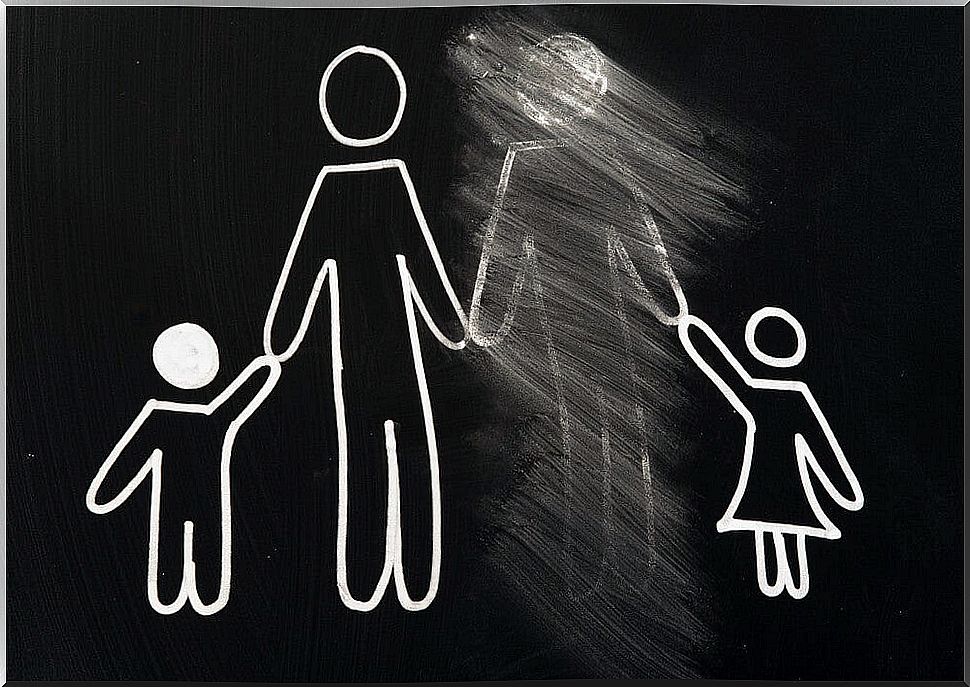Family Bonding And Untying, What Are They?

Any family goes through moments of stability and instability. These processes can unleash real crises that, at times, profoundly modify the internal family structure. The universal and characteristic concept of the family is one of union, coexistence and attachment among its members. However, there are circumstances in which these are not the main factors that characterize it.
Family bonding is the inclusion of a member within the family, with all that this encompasses: admission, accommodation and incorporation. This inclusion implies the acceptance that this member is part of the family structure.
On the opposite side, there is family separation, which involves the withdrawal or exclusion of a family member, which can be due to different reasons.
Disengagement can be linked to the different stages of the family life cycle or to critical circumstances such as health problems, lack of resources or breakdown in family relationships. Next, we will see some elements to better understand what family bonding and untying is.
Family bonding or inclusion
The linking or inclusion of new members in the family marks the beginning of a new stage in family life. It is important to clarify the difference between what is known as the ‘true’ family and the ‘legitimate’ family.

The true or royal family refers to kinship ties, mainly those by blood. The legitimized family, for its part, is based on belonging.
A new member who is in the process of inclusion usually comes from another ‘royal’ family, and arrives to occupy a space that will be legitimized in this new family that welcomes him. This new member contributes to the restructuring of the family and comes with his own story; This is the case, for example, of an adoption.
This bonding process can be difficult for certain families who often need professional help. Let’s not forget that it may be an emotional circumstance of a certain complexity.
Structural family separation
When there is repeated or persistent distancing within a family, we can speak of structural disconnection. This is the case, for example, of what is known as decoupled, multiproblematic or dissolved families.
In these families, abandonment and its alternation with permanence are the general rule. In this situation are, for example, families where there is early parental abandonment.
When a child is in a situation of risk and this situation becomes evident for the social or institutional environment, it may happen that their removal from the family is decided. The minor is usually housed in a foster home or in a foster institution.
In the event that an adult has committed a serious act against his or her own family, this may also be temporarily or permanently dissociated.
Temporary family separation: leaks
During adolescence, disengagement can occur as an abrupt episode as a consequence of a run. This implies a break in the coexistence of a family that, until that moment, was probably stable. Short-term leaks, such as those lasting a few hours or days, are not included in this category.
The flight is a characteristic of haste of the emancipation of a son. This emancipation is achieved through a difficult separation and not through negotiation, as would occur under normal conditions.

Marital and family separation
In the event of separation or divorce, the family member who left home can maintain regular contact, mainly with their children, or, on the contrary, become totally detached from the family context. When these situations occur, there is not only a marital separation, but there is also a parental and family separation by the spouse who left home.
In practice, marital divorce sometimes also implies a parental divorce. It is possible that the spouse who excludes himself and separates from his family was during the marriage an absent family member. In many cases, they may even have partially exercised the parental role or delegated it entirely.
How to professionally approach disengagement?
Professionals must approach the issue of family separation very carefully, in order not to increase the crisis and deepen the distancing of a family member. More than questioning the separation, work is required on the generation of agreements that are consistent with the real situation of physical distancing or relationship.









